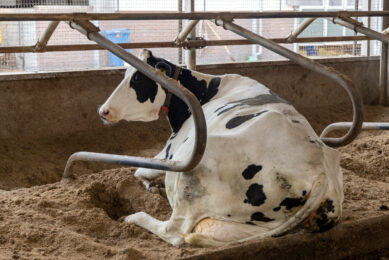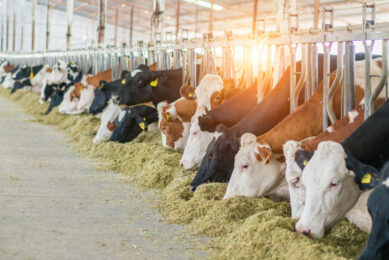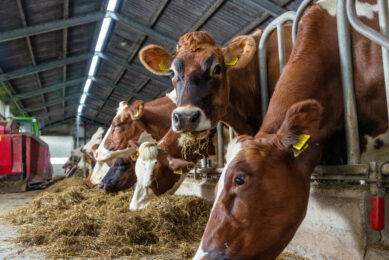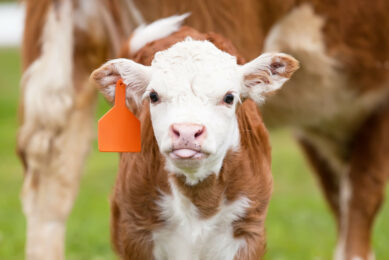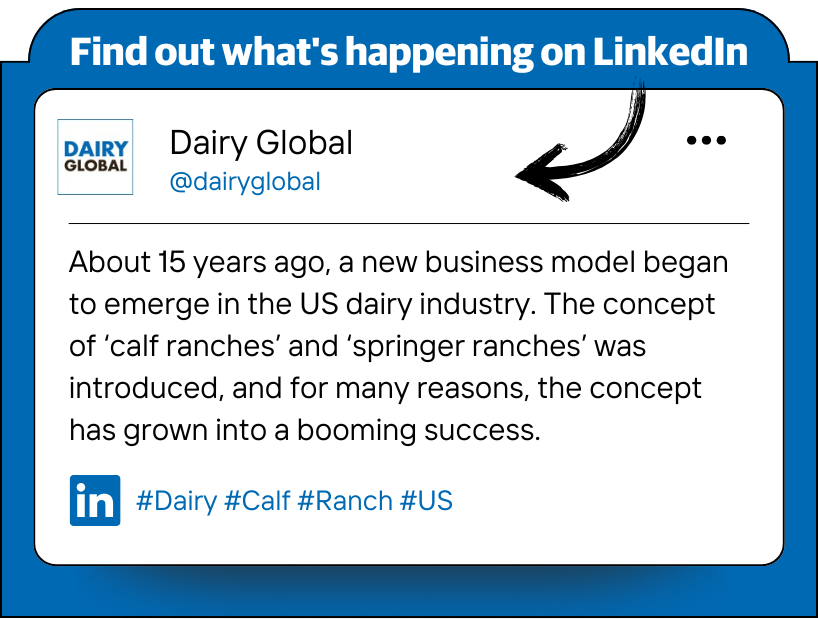Dutch ‘Beter Leven’ welfare label small in dairy, but receives support

In recent years, dairy concepts and welfare labels have been gaining ground in dairy farming in the Netherlands. A relatively small one is the Beter Leven (Better Life) welfare label. While it is virtually the basis for Dutch sales in pigs and poultry, it remains small in dairy and offers opportunities to participants.
“We are very satisfied with the Beter Leven welfare label,” says Jasper Giesen from Ezinge in Groningen. Giesen is one of the first group of livestock farmers who joined the welfare label about 6 years ago. “Of course, there are things that make you think, ‘What’s the use of that?’ But it remains our own choice to participate.”
The Beter Leven welfare label (BLk) for dairy is owned by the Animal Protection Society and developed in collaboration with the Bird Protection Society and the Nature & Environment Foundation. So far, dairy processor Farmel and supermarket chain Jumbo are the largest parties. Fryske and Lidl have a (small) range. FrieslandCampina has signed up to the ‘On the way to PlanetProof’ welfare label; Albert Heijn has its own welfare label with ‘Beter voor’ and collaborates with A-Ware and DeltaMilk.
Brand world will not be forced
Because other large parties do not join, Giesen has acquired 31 colleagues since the start who produce for the welfare label. Of these, 24 have 1 star, one entrepreneur has 2 stars and seven of them have 3 stars. The more stars, the stricter the requirements – 3 stars is the level of organic, but Skal-certified organic companies cannot obtain a 3-star certificate one-on-one. Not huge numbers, right? “Maybe not, but I am proud that our dairy is in around 700 Jumbo stores. And we get something extra out of the market with it.”
For a welfare label in dairy farming, 32 participants is a small number, certainly compared to pig and poultry farming where the Beter Leven welfare label is the basis for a large part of the Dutch retail sector and a total of more than 1,000 companies are affiliated.
However, the welfare label world cannot be forced. Gé Backus of Connecting Agri & Food explains that dairy companies and retailers make their own choices. His company is working on greater efficiency and quality control in livestock farming chains. For dairy processors, for example, their own policy on image and sustainability, current agreements with customers and consequences for logistics are decisive. For supermarkets, aspects such as recognisability, obligations, flexibility, cost reimbursements and competitive considerations play a role.

Critical voices on Animal Protection
Owner of Animal Protection notices that Beter Leven is strict compared to other welfare labels, according to business developer Charlot Chabot. “We do not have a phase-in model. This means that livestock farmers must meet all requirements from day one and dairy processors must be able to collect and process all milk separately. There are transition periods, but these are often in addition to a minimum standard that takes effect immediately.”
According to Chabot, the fact that Beter Leven focuses on welfare can influence the interest. Moreover, livestock farmers can only join when the market allows it, and therefore the demand for Beter Leven dairy increases. “Farmers sometimes have to invest considerably in their stables to meet the requirements.” The dimensions of cubicles and walk-through areas in particular are often a limitation. Furthermore, dairy companies and retailers want to radiate sustainability more broadly than just welfare. That is not entirely unjustified, since Beter Leven also sets requirements for the environment and biodiversity. Chabot does not rule out that there are also critical voices about the Animal Protection as a partner. “You do feel a bit of distance with some of them,” is her experience.
Chabot hopes that there will be more cooperation between welfare labels. She does not rule out the option that Beter Leven can take care of the welfare component.

Welfare much less of an issue
Although the Beter Leven welfare label has relatively few participants, size says little about its raison d’être or impact. Backus: “For pigs and poultry, the welfare label has proven to be a ‘game changer’; it has demonstrably raised the standard for animal welfare in the Dutch market. But for poultry, it also started very small.”
In that sense, the dairy industry is unlucky, or actually lucky, in that welfare is less of an issue. Moreover, the dairy industry has already largely tackled the issue of welfare with the Weidemelk welfare label. “Citizens mainly associate welfare in dairy cattle with grazing. That is very different from pigs and chickens, where the conditions in the barn are directly considered.” In addition, the dairy chain focuses more on climate, which has been reinforced in recent years by the ambition to reduce greenhouse gas emissions (CO2) and is also paying for this.
Backus considers it important that the added value for the consumer is clear and credible. According to him, that is where the strength of BLk lies: it is widely trusted, also because of the involvement of Animal Protection. “That is not self-evident, because consumers do not actively ask for welfare labels. It is mainly the supermarket that determines what ends up on the shelves.” Jumbo itself says that the extra legal standards for welfare are the strength of the welfare label. Incidentally, the retailer also has dairy products with other welfare labels on the shelves.
Need for fewer welfare label
Chain manager Maurits Steverink is positive about the future of the welfare label. He sees from all sides that welfare is higher on the agenda and that grazing is no longer sufficient. According to him, dairy companies also realise this, certainly those that focus on the Dutch retail market. “A lot happens behind the scenes.” According to him, the fact that the legislator demands more welfare through the covenant for Animal-worthy Livestock Farming is not an obstacle. “The first 5-10 years are needed for market development before it becomes a standard,” is his expectation.
According to Steverink, another aspect where there are opportunities for BLk is the number of welfare labels. He notices a need for fewer welfare labels with more clarity for the consumer. “If you put everything in perspective, BLk and organic have the best cards. Just like with pork, chicken and eggs, BLk could become the basis in the supermarket for dairy.”

Welfare label compensates for additional costs
In his desired scenario, dairy buyers and retailers will embrace it in the coming years and livestock farmers will join in. Whether the welfare label is suitable depends on many factors. The compensation for investments is sufficient for the average company, but not for everyone. As soon as participation does require more investments, the question is whether it will yield economic returns. Steverink emphasises that as soon as business development starts up again, new stables already largely meet the requirements.
The fact that the welfare label compensates for additional costs is also critical at the same time; why is the livestock farmer not allowed to benefit from something extra? Or put differently: why participate if I do not benefit from it in the end? Backus says, “Of course an entrepreneur asks for a cent more. But the consumer asks for a cent less. The retailers and other parties are in between. They act as gatekeepers. They are powerful, but not all-powerful. Because they also operate under pressure from competition and affordability.”
Backus emphasises that he should not only choose from the short-term economy. “Ultimately, it comes down to the strategic choice: which market suits your company in the next 10 years?”
Join 13,000+ subscribers
Subscribe to our newsletter to stay updated about all the need-to-know content in the dairy sector, two times a week.



